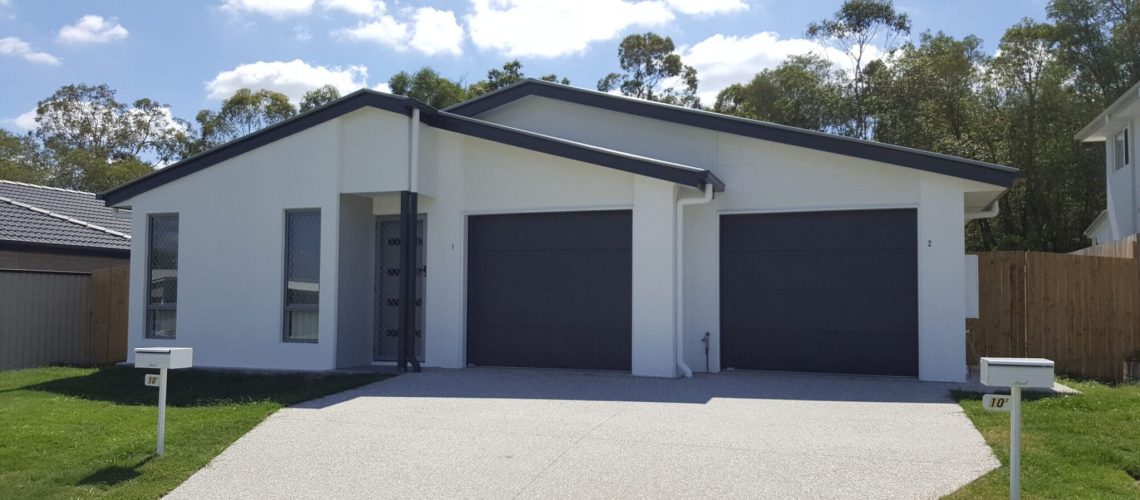Home / Dual Occupancy Properties on the Rise

Read on to learn more about dual occupancy (Dual Occupancy property type) developments, and hear from land owners who have successfully been through the process.
What is a Dual Occupancy development and what are the benefits?
A Dual Occupancy development is usually described as more than one dwelling on a single block of land. While there are essentially two Dual Occupancy options – side-by-side or stand-alone – there are many choices when it comes to house size, floorplans, design, fixtures and fittings. Each home has its own entrance and amenities.

A dual occupancy development is a highly versatile investment. You can choose to live in one dwelling, then sell or rent one, or you could rent out both or even sell both. It is this flexibility that makes Dual Occupancy developments so appealing to people at all stages of the real estate cycle.
For downsizers, a Dual Occupancy development gives you the opportunity to stay in a neighbourhood you love but in a more low-maintenance property. Or, it might give you the opportunity to help your children enter the property market in one of the homes. And, if you are ready to become a property investor for the first time, a Dual Occupancy development might be a great way to generate revenue and offset your mortgage.
Pros and Cons of Dual Occupancy Homes or Properties
Dual Occupancy properties are popular among investors for a reason, although there are also downsides to this type of property investment.
Pros
- As potentially high-income property investments, they represent a vehicle for improved cash flow. You essentially have twice the rental income, which can be used to supplement a mortgage or home loan repayments.
- They maximise the land use and property potential, as you have two dwelling places built on a single plot of land.
- They help save on maintenance expenses, since you can split expenses with your tenants (depending on your agreement), and the projected high rental yield can sufficiently cover these, and more.
- They increase the size of your property portfolio without the associated costs of purchasing two separate properties.
- They are great for rental yields and will help balance your portfolio and improve your serviceability for future property purchase.
Cons
- They may decrease the desirability/saleability of your property as not a lot of owner-occupiers like the idea of having a property attached to their own residence.
- If you do not properly plan or set a strict budget, you may end up spending more—which may not be recoupable in the final sale price.
- They may not be the best vehicle for increasing equity.
- They are subject to market fluctuations (supply and demand), so you may end up losing two incomes if the property is no longer in demand in your area.
- They can be challenging to sell separately (except some duplexes).
- You need to spend extra on setting up separate utility meters for each property.
Micro Apartments Brisbane – Everything You Need To Know
What Are Micro Apartments Brisbane? Micro Apartments Brisbane are semi-self-contained...
Read MoreRussell Island Suburb Profile – Should I Invest on Russell Island?
This Suburb Profile aims to give you a good overview...
Read More

